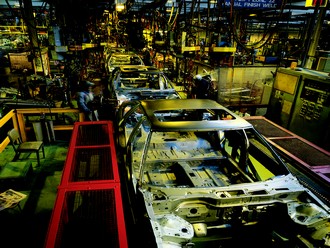Getting up to speed with machine safety
Anyone involved in machine safety systems needs to ensure they are up to speed with the new EU Machinery Directive requirements. Paul Considine of Wieland Electric explains the implications and charts a course for easy compliance.

From the 29th December 2009 the new EU Machinery Directive will come into force, and this has implications for anyone involved in supplying, designing or installing safety systems for machinery. The main impact of the new Directive will be to change the ways in which machine safety is managed.
Electrical engineers and contractors working on machine systems need to be aware of the changes embodied in the new Directive, as well as the most cost effective ways of achieving compliance. It is also important to note that requirements of the Directive apply to any machine modifications as well as new machines – and both require a Declaration of Conformity.
The reason for introducing a new Directive (2006/42/EC) is to address the limitations of its predecessor (Directive 95/16/EC), which achieved compliance though EN 954-1 but hasn’t kept pace with changes in technology. In particular, EN 954-1 was based on calculated risk and aimed to set an appropriate system behaviour, or control class, against a category. This failed to address the fact that it is no longer possible to measure safety purely in terms of simple categories because of the programmable electronics that are now common in safety technology.
In addition, EN 954-1 did not provide information on the probability of failure.
In tacking these issues, Directive 2006/42/EC will achieve compliance through two standards – EN ISO 13849-1 and EN 62061.
EN ISO 13849-1 will be familiar because it incorporates the categories from EN 954-1:1996 and examines complete safety functions, including all the components involved in their design. In bringing machine safety up to speed, though, it goes a step further to include a quantitative assessment of the safety functions, based on a performance level (PL) that builds on the category approach. It also describes how to calculate the PL that can be achieved when several safety-related parts are combined into one overall system. Any deviations from EN ISO 13849-1 are referred to IEC 61508, which includes the sector-specific standard EN 62061 – the other element of the new Directive.
In EN 62061, the performance level is described through the safety integrity level (SIL) and the safety functions identified from the risk analysis are divided into safety sub-functions. As a safety-related control system is made up of several subsystems, these safety sub-functions are assigned to the actual devices (hardware or software) that are the subsystems or subsystem elements. The safety-related characteristics of these subsystems are described through the SIL and Probability of Dangerous Failure Per Hour (PFHD) parameters.
Clearly, the new Directive introduces a higher level of complexity into achieving machine safety but there are technologies at hand that can make the whole process of compliance easier to achieve. For example, integration of functions can ensure that all levels, or sub-functions, of safety operations area addressed through the same system, making the whole process more efficient as well as more convenient.
These systems can also play a major role in minimising downtime when a fault occurs – and they can do so more cost-effectively than monitoring systems that have been on the market for a while.
For instance, by integrating fault diagnosis into the safety control system, time can be saved in tracing the location of the fault prior to repairing it. This is proving beneficial for both in-house electrical engineers and contractors – and the end customer also benefits from reduced costs.
These same systems can also be put to good use in the early design stages of a machine safety system, by using simulation technology for a ‘dry run’ through the system before it goes live. This will identify potential problems at an early stage.
It makes sense to consider a fully integrated system that brings together all of the key functions. These can include the monitoring of every aspect of safety - from post-top emergency buttons to light beams on conveyors - as well as facilitating fast location and diagnosis of faults. Furthermore, they operate from a centralised computer so that all of the information is readily accessible at any time.
At a time when manufacturing and processing companies looking at ways to reduce overheads, an approach that can cut costs without compromising on safety is sure to be an attractive proposition. So there are good reasons for taking a fresh look at machine safety systems and taking advantage of the latest innovations.
www.wielandsafety.net
Contact Details and Archive...